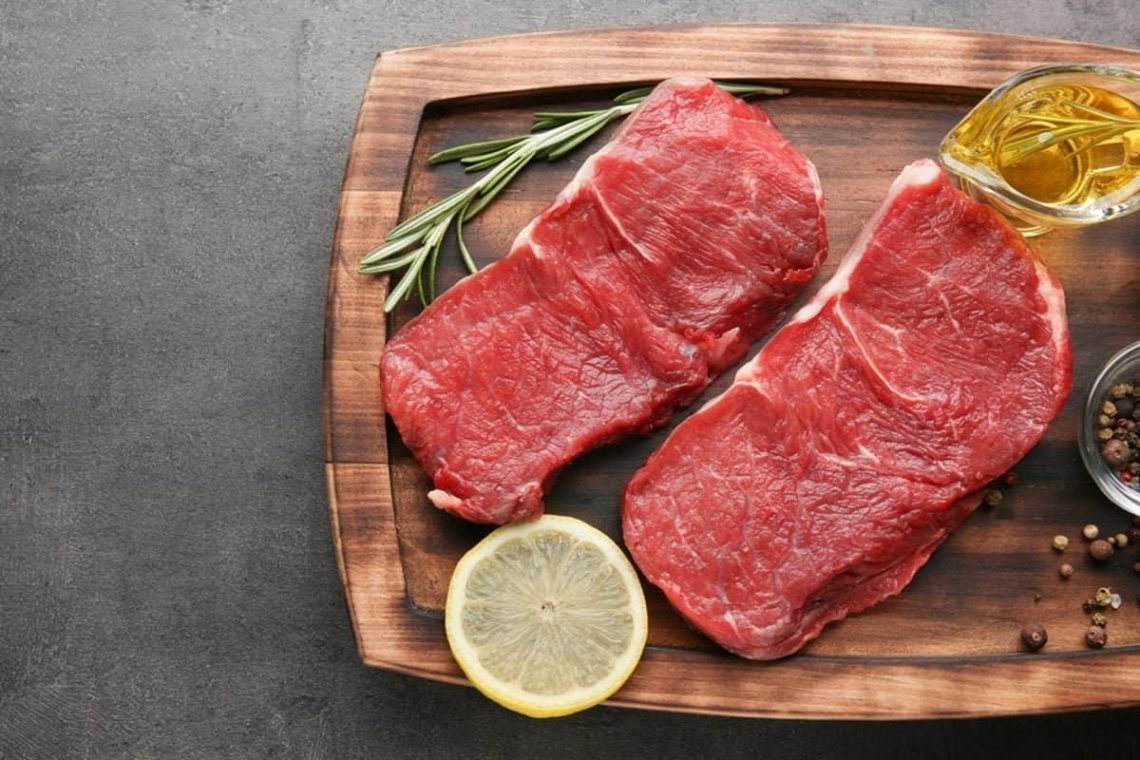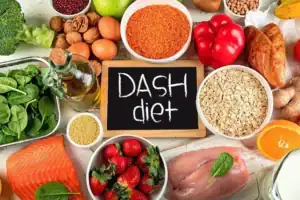Why Red Meat Consumption is a Hot Topic
Red meat has long been a favourite on dinner tables worldwide, offering high levels of protein and more bioavailable vitamins and minerals like iron, zinc and vitamin B12. However, in recent years, health risks linked to consuming too much red meat, particularly related to cancer and heart disease, have sparked ongoing debates.
As research has evolved, health experts now recommend limiting red and processed meats to reduce these risks. But when we ask “how much red meat is too much?”, what does “too much” really mean, and how can you enjoy red meat without the worry? This article explores what counts as red meat, the health risks and recommended limits, and tips for enjoying it in a healthier way.
What Counts as Red Meat?
When we talk about “red meat,” we’re referring specifically to meats like beef, pork, and lamb. This category is distinct from poultry (such as chicken and turkey) and fish, which have different nutritional profiles and health implications. Red meat is naturally rich in haem iron, which the body absorbs more easily than non-haem iron from plant sources, making it valuable for many. When your body is low in iron anaemia can result. Anaemia is a very unpleasant condition in which the number of red blood cells or the haemoglobin concentration within them is lower than normal. This makes you body less able to carry oxygen to the cells of the body and can make a person feel very tired, weak, dizzy and like they need to breath faster. The World Health Organisation aka WHO estimates that 40% of children 6 months to 5 year olds, 37% of pregnant women, and 30% of women 15–49 years of age worldwide are anaemic.
However, this type of iron is also linked to colorectal cancer risk when consumed in excess. This is because the haem naturally found in red meat (processed or fresh), when digested breaks down into cancer-causing N-nitroso chemicals. These chemicals could potentially damage the lining of the bowel leading to an increased risk of developing cancer.
Processed Meat vs. Fresh Red Meat
It’s essential to distinguish red meat from processed meats. Processed meats are those preserved by methods such as smoking, curing, salting or adding preservatives. This category includes ham (yes, even one you boil yourself at home), bacon/ rashers, sausages, chorizo and salami. Although processed meats are convenient and flavourful, they come with higher health risks and are classified differently by health authorities. The International Agency for Research on Cancer (IARC) is an agency of the World Health Organisation (WHO) that look at things that pose a risk of cancer to humans. They classify carcinogens, substances that have been assoicated with cancer in humans, into 5 categories. Group 1 is when it is considered to be a carcinogen to humans. Group 2a is when it is probably a carcinogen to humans. Processed meats is in Group 1 indicating a strong link to cancer while red meat falls into Group 2a, meaning it “probably” causes cancer. The classification system is about the weight of the evidence that it is a carcinogen and does not reflect how many cancers it causes. So, they’re more sure about processed meat than fresh red meat.
Understanding these classifications is key to making informed dietary choices. The recommendations were based on epidemiological studies suggesting that small increases in the risk of several cancers may be associated with high consumption of red meat or processed meat. The risks are small, but they are there.
Estimates suggest about 34,000 cancer deaths worldwide each year are attributable to diets high in processed meat. So, for about every 50 gram portion of processed meat eaten daily there is an increase in the risk of colorectal cancer by about 18%.
Please note the word daily as the risk increases with the amount consumed. Therefore, casual intake may not increase risk in any real way. These numbers may seem large, and each one counts, but relatively speaking they are smaller than the yearly 1 million cancer deaths due to tobacco and yearly 600,000 due to alcohol consumption.
Health Risks of Excessive Red Meat Consumption
As mentioned red meat is classified as a Group 2a carcinogen meaning it “probably causes cancer.” The classification is based on research called epidemiology studies which are studies that involve making observations of cancer rates in different groups of people eating different diet. Studies suggest that people who consume large amounts of red meat may be more likely to develop colorectal cancer than those who eat smaller quantities.
For processed meats, which contain preservatives like nitrates and nitrites, the evidence and risk is more clear cut. Processed meat is classified in the WHO’s Group 1 category due to strong evidence linking it to cancer, particularly colorectal cancer. However, there is an association with stomach cancer too. Other substances in Group 1 include smoking, alcohol, UV radiation and iodizing radiation. But a reminder, the classification indicates the level of certainty that a substance causes cancer, it does not indicate the level of risk associated with exposure. For example, smoking and alcohol cause far more cancers.
How Much Red Meat is Considered Safe?
So, how much red meat is considered safe to eat each week?
The World Cancer Research Fund International recommends limiting red meat intake to no more than 350 to 500 grams (12 – 18oz) of cooked red meat per week, which equates to about 700–750 grams (max) of raw meat.
For practical purposes, this limit translates to roughly three meals or less with red meat per week. Sticking to these portion sizes helps mitigate the health risks associated with red meat while allowing it to remain a balanced part of your diet. This approach is particularly beneficial for individuals with higher iron needs, such as women of childbearing age and young kids, who can benefit from the haem iron content in red meat.
Beyond just quantity, cooking methods play a role. To reduce risk, aim to cook red meat at lower temperatures and avoid burning or charring, which can produce harmful chemicals. Balancing red meat with other sources of protein, such as chicken, fish, and plant-based options, further promotes health.
How Cooking Methods Impact Health Risks
Cooking methods significantly impact the healthiness of red meat. High-temperature cooking techniques like grilling, barbecuing, or frying can produce harmful compounds, particularly heterocyclic amines (HCAs) and polycyclic aromatic hydrocarbons (PAHs). These chemicals form when meat, especially red meat, is cooked at high temperatures or becomes charred, and research has linked them to an increased risk of cancer as they can cause damage to the bowel.
Tips for Safer Cooking
- Cook at Lower Temperatures: Opt for slower cooking methods, such as baking, stewing, or roasting, to limit the formation of HCAs and PAHs.
- Avoid Charring or Burning: If grilling or barbecuing, cook on lower heat to prevent burning. Trim the burnt bits off before serving.
- Precook the meat: PAHs are deposited onto the meat by smoke. So reducing the amount of time meat is on the BBQ flame may help. Boiling meat helps keep it moist so that when you finish it on the bbq you get the taste, keep the meat moist and potentially reduce PAHs.
- Marinate Meat Before Cooking: Marinating meat in the likes of lemon juice, vinegar, oil, herbs and spices can reduce HCA formation according to the American Institute for Cancer Research.
These small adjustments to cooking techniques allow you to enjoy red meat more safely. These tips also apply to other foods that can char during high-temperature cooking, reducing exposure to potentially harmful chemicals across the diet.
Processed Meat: Why Less is Best
Processed meats, including bacon, sausages, salami, and ham, fall into a higher-risk category. Unlike fresh red meat, processed meats are preserved by methods like curing, smoking, and adding preservatives like nitrates and nitrites. These additives help preserve flavour and shelf life but are associated with increased cancer risk. For example, nitrates and nitrites can convert into carcinogenic compounds in the body, potentially damaging the cells lining the bowel.
Processed meats are classified by the WHO as Group 1 carcinogens, indicating strong evidence linking them to cancer. Specifically, they are associated with an increased risk of colorectal and potentially stomach cancer. Here’s a breakdown of how processed meat impacts health:
- Nitrates and Nitrites: These preservatives can potentially damage the cells lining the bowel, increasing cancer risk.
- Haem Content: Both red and processed meats contain haem iron, which can break down into potentially harmful compounds in the gut.
- HCAs and PAHs: These chemicals, produced during high-temperature cooking, may damage cells and potentially increase cancer risk.
For these reasons, it’s recommended to limit processed meat intake as much as possible. While a ham sandwich or a rasher might be a lunchbox favourite, consider reserving processed meats for occasional consumption rather than daily meals. Fresh, unprocessed/ fresh meats or plant-based proteins serve as healthier alternatives, reducing the overall intake of carcinogens while still providing balanced protein sources.
Smart Swaps: Protein Alternatives to Red and Processed Meat
Reducing red and processed meat doesn’t mean sacrificing protein intake. Incorporating a variety of protein sources can diversify meals and boost nutrient intake. Here are practical protein alternatives to balance your diet:
- Poultry: Chicken and turkey are lean proteins with lower saturated fat, making them heart-healthy choices.
- Fish: Especially oily fish like salmon, mackerel, and sardines provide high-quality protein and omega-3 fatty acids for heart and brain health. Aim to include oily fish once a week. White fish and shellfish are extremely healthy choices that can be enjoyed regularly.
- Eggs: Eggs are nutrient-dense, offering important nutrients like vitamin B12, selenium and choline. They’re ideal for breakfast, lunch, or dinner.
- Dairy Products: Plain yoghurt, soft cheeses and milk provide minimally processed protein along with calcium, beneficial for bone health.
- Plant-Based Proteins: Beans, lentils, chickpeas, and tofu are high in fibre and nutrients, great for heart and gut health.
- Nuts and Seeds: While not as high in protein per serving, they provide healthy fats, fibre, and micronutrients.
Using a mix of these proteins throughout the week creates a balanced diet that reduces red and processed meat intake without compromising on protein or nutrition.
Conclusion: Striking a Balance
Red meat can be part of a balanced diet, providing essential nutrients like iron, B vitamins, and protein. However, moderation is key. By following guidelines to limit red meat to around 500 grams cooked per week (or less), choosing fresh cuts over processed options, and using safe cooking practices, you can enjoy the benefits of red meat with reduced risk.
Incorporating various protein sources—like poultry, fish, eggs, and plant-based options—enriches your diet while reducing dependency on red and processed meats. This balanced approach helps you maintain a nutrient-rich diet that aligns with both health guidelines and personal preferences.
Frequently Asked Questions (FAQ)
1. How much red meat is safe to eat per week?
The recommended limit for red meat is around 500 grams of cooked weight per week (approximately 700–750 grams raw). This amount allows you to benefit from red meat’s nutrients without excessive intake that could increase health risks, particularly related to colorectal cancer.
2. What types of meats are classified as red meat?
Red meat includes beef, pork, lamb, and veal. It does not include poultry (like chicken and turkey) or fish. Red meat is higher in haem iron, which the body absorbs more easily but is also linked to some health risks.
3. What’s the difference between red meat and processed meat?
Red meat refers to unprocessed cuts of beef, pork, lamb, and similar meats. Processed meat has been preserved through smoking, curing, salting, or adding preservatives. Examples include ham, bacon, sausages, and salami. Processed meats are associated with a higher risk of cancer and generally speaking should not be eaten daily.
4. Why is red meat linked to cancer risk?
The haem iron in red meat, along with compounds formed during high-temperature cooking, can lead to the production of chemicals that may damage cells, increasing cancer risk. Regular consumption of large amounts of red or processed meat has been linked to a higher likelihood of developing certain cancers, particularly colorectal cancer.
5. How can I reduce the risks associated with red meat?
To lower risks, limit red meat intake to about 500 grams cooked per week, avoid charring or burning it, and cook at lower temperatures. Include a variety of protein sources, such as poultry, fish, and plant-based proteins, to balance your diet.
6. Are there healthier ways to cook red meat?
Yes, cooking methods like baking, stewing, or roasting at lower temperatures help reduce harmful chemicals that are produced when red meat is cooked at high heat. Avoid grilling or frying at high temperatures, and if you do, prevent charring.
7. Is processed meat worse than red meat?
Yes, processed meat has a stronger link to cancer than fresh red meat and is classified as a Group 1 carcinogen, meaning the link to cancer is well-established. It’s best to consume processed meats infrequently.
8. Can I still eat bacon and sausages if I’m trying to reduce my cancer risk?
While you can still enjoy these foods occasionally, consider them as “sometimes” foods rather than daily staples. Choose fresh protein options like eggs, chicken, or fish for more regular meals.
9. Are plant-based proteins enough to replace red meat in my diet?
Yes, plant-based proteins like beans, lentils, tofu, and tempeh provide a high-quality protein alternative and are rich in fibre and other nutrients. They are also beneficial for heart health and can reduce the risks associated with red and processed meats.
10. What are some good protein alternatives to red and processed meat for kids’ lunches?
Consider options like chicken, eggs, cheese, yoghurt, and hummus for children’s lunches. These options provide protein without the risks associated with processed meats, making them healthier choices for regular meals.











